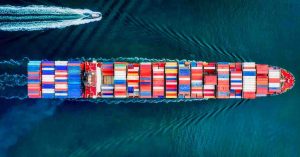In September 2023, a shipping company Cargill Ocean Transportation fitted giant sails to a cargo ship and made a maiden voyage from China to Brazil.
Exactly one year later, in the first week of September 2024, a French sailing cargo ship, carrying 1,000 tons covered a 3,662 nautical-mile journey across the Atlantic to New York.
These two expeditions within one year, demonstrated that wind propulsion is making a comeback for the shipping industry.
About 6000 years back, ancient Egyptians came out with the first wooden sailboat with simple masts and sails to make water transport faster. As civilizations advanced, we improvised and developed amazing sailing ships to transport people, move goods, invade territories, and discover new places.
Then came industrialization, it brought steam-powered ships followed by gasoline-powered vessels, ending thousands of years of wind-powered sailing ships.
Well! Not so.
The sailing expeditions by Switzerland-based Cargill and French shipbuilder TransOceanic Wind Transport (TOWT) are not for some marketing gimmicks, it is a direction in which the global shipping industry is moving.
Wind and other forms of renewable energy are fast emerging as fuel for the maritime industry. Some of the biggest names in the shipping industry are investing in building newly designed vessels that harness the power of green energy.
In fact, many different types of experiments are hitting the water which we will look at below, but before that let us understand the reasons for this newfound love.
Reason to Decarbonize the Shipping Industry

From transporting goods to carrying oil, the role of shipping in the global economy is critical. More than 90 percent of globally traded goods are transported on ships efficiently, safely, and cost-effectively.
Every day, countless vessels, such as ships, ferries, and trawlers navigate the Planet’s oceans, seas, rivers, and inland waterways, facilitating the movement of people and goods.
However, as mentioned, the shipping industry primarily runs on fossil fuels, contributing to about 3 percent of global greenhouse gas emissions of which international shipping is the major culprit.
Taking cognizance of this folly, partly also because of the external pressure from environmentalists, in July 2023, the International Maritime Organization (IMO), the global regulatory body for shipping, agreed to set a net-zero emissions target by or around 2050.
The IMO has also set indicative emission reduction targets for 2030 (20% emissions reduction, striving for 30%) and 2040 (70% emissions reduction, striving for 80%).
Considering the industry produces about 900 million tonnes of carbon each year, which will obviously increase, as more ships enter the waters, but give and take, IMO commitments roughly means 200 million tonnes of carbon reduction each year for the next 5-6 years.
While the industry has already initiated measures to reduce carbon emissions by incorporating energy-efficient machinery and route optimizations, these steps will not be enough.
To achieve net-zero ambitious goals and reduce emissions from shipping, renewable energy sources and other innovative techniques are to be adapted expeditiously.
Let us explore some options to decarbonize shipping.
How Shipping is Decarbonising
Wind Energy
Cargill Ocean Transportation and TOWT by opting for sail ships have leveraged a freely available resource, i.e. wind, which our ancestors relied on when they first explored an idea to transform shipping.
Though sailing boats still exist and are used for sports racing and leisure, sails in large boats and for moving cargo were largely absent.
When French startup, TOWT, embarked on its journey from France to New York, loaded with champagne and wine, it was the first time in nearly a century that a large cargo ship crossed the Atlantic powered almost entirely by the wind.
Similarly, the voyage done by the shipping firm Cargill demonstrated that wind-propulsion technology developed by UK firm BAR Technologies works.
These 21st-century vessels will not rely on human sailors to adjust their sails, instead, there is a sophisticated mechanism of aerodynamics with pulleys, actuators, and sensors.
However, these vessels are not completely reliant on the wind as they have fuel tanks as well, much like hybrid cars. Nonetheless, wind-powered is surely a step that has the potential to decarbonize the shipping industry, once the initial pilots move to full-scale deployments.
Electric and Battery
Then there are electric ships, or more technically, battery-powered ships. While the concept seems nice, making these ships is not easy, as powering a large ship would require an extraordinarily large battery.
Moreover, most ports don’t have the feature to plug ships into power directly.
Fleetzero is a startup that envisions making smaller electric ships that swap batteries at ports along the way, in a system that could prove cheaper than shipping with fossil fuels. The company’s batteries are designed to fit into standard shipping containers, so a crane can lift them off the ship at a port and replace them with batteries that have been freshly charged. Because smaller ships can stop at ports that aren’t commonly used today.
Interestingly, electric ships and boats can be game changers for inland water transport, as the smaller boats can be fitted with batteries that can be charged at regular intervals.
Last year, India introduced its first water metro system in one of its cities where boats primarily run on electricity. It is a novel idea to decarbonize passenger ferry service which can be replicated in many other cities with inland waterways.
Green Hydrogen and Green Ammonia
Green ammonia and green hydrogen-powered ships are other alternatives being explored to decarbonize the shipping industry. The high energy density of these fuels makes them suitable for long-distance voyages, overcoming the limitation of electric ships.
However, challenges remain with fuel storage, high costs, infrastructure development for production and refueling, and engine redevelopment to burn these alternative fuels.
Biofuels
Biofuels are derived from sources like vegetable oils or waste materials and offer a substantial reduction in carbon emissions.
The biofuel-powered shipping has an advantage over green hydrogen and green ammonia as they are better compatible with conventional vessels without requiring any modification. Their concerns are about scalability and potential competition with food production.
Wrapping Up
While as of now, no solution is perfect and can reduce the emissions to zero, one thing is certain, the next few years will require commitment and collaboration across the shipping industry. An increased focus from policymakers, company leadership, innovators, and the involvement of other stakeholders is needed urgently.
The shipping sector is the backbone of global trade and its decarbonization will be critical for a sustainable planet.
The article is written by Varun, founder of Change Started






Add comment